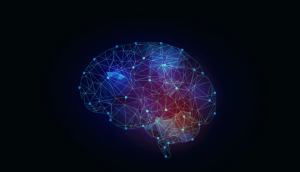In most countries, the lockdown due to governmental coronavirus regulations is being eased. In front of us is the prospect of a return to our office workplace with social distancing requirements due to the coronavirus concerns. However, is this pandemic causing us to reevaluate the current operational business models? Is of the traditional “in-person” office structure passé? Where exactly is our workplace? If one thing is clear as a result of the global pandemic, it doesn’t matter where we work anymore. The world is going to look different in business. Employers will have to show flexibility when it comes to working from home. In this article, we will be to start the conversation on the new 2020 Workplace Paradym. Let’s first look at what it means to be able to go back to the office. As of today, there is no vaccination on the market for Covid-19, leading to the assumption some employees may fear a return to the physical work environment.

At the time of Corona (Covid-19), the most important means of reintegration with colleagues seems to be social distancing via 6-feet or online video. Social distancing is, as the word says, keeping a distance. It was initially invented in the 18th century by the Brit John Haygarth to curb the spread of smallpox. At that time, it turned out not to work because people with contact professions had to earn money to address our basic human needs of survival. The necessity of survival, if strong enough, sends our brain into overdrive and as in this case, resisted cognitive analysis of potential dangers of smallpox.
Today, more than a century later, we have implemented social distancing programs throughout the world. Several countries argue for one and a half or two meters distance–Is this distance enough to do the job? Recent research by MIT shows that in a warm, humid atmosphere, virus droplets would move at speeds of 10 to 30 meters per second. The virus can thus form a cloud that may spread over 7 to 8 meters. In the same study, the researchers warned that the droplets could float in the air for hours on end if they moved through ventilation or air conditioning systems. The research shows how important it is for employees who have symptoms of the virus to stay at home without any excuse.

In the current environment, business planning efforts of returning to the workplace is at the top of the list. The scenario plans of large corporations include various measures. Here are a few Covid-19 safety concepts business is implementing:
- At the entry, each employee’s temperature will be taken with thermometers to check for fever;
- Lines and arrows on the ground will help to guide and regulate traffic in the office;
- Stop signs are placed to prevent collisions;
- Rules are displayed on the walls to avoid gathering at the water cooler, copier, and kitchen;
- Under each desk, a circle will visualize the distance to be kept;
- And, plexiglass screens between desks or larger cubicles will be installed.
In practice, we see that these plans immediately meet with resistance. Questions arise as to whether the employer or team members do not trust the employee in question. Besides, it is very unnatural for our brain to keep its distance. We are social beings and need proximity and contact to feel good. We miss oxytocin as a result of these measures due to losing friendly (professional) interaction.
Furthermore, the barriers erected not only ensure physical avoidance but also will lead to a feeling of rejection. When I see my colleague approaching from afar, his evasive maneuver causes a feeling of rejection. Research shows that when we feel rejected, the same brain areas are active as when we feel the consequences of physical pain. Missing contact, therefore, ensures that the problem is not directly addressed.
Also, we will see that if we cannot move freely in the office, this will limit our expression. The brain, which primarily focuses on safety, will be distracted and consume neural energy to fulfill this primary task. Either way, it will inhibit our motivation, drive, and creativity.
Finally, it is questionable whether we can learn the new behavior of keeping a distance in a short time. Numerous studies show that new behavior if repeated every day takes at least close to a month to form a habit and six to nine months to embed. However, the proposed change is about behavior that we have practiced our entire lives and that have been acquired and grounded deep within us. It requires us to be constantly aware of what we are doing. Without self-knowledge and continuous awareness, it becomes a difficult task. The brain is so often distracted that it is questionable whether we pay attention to all these new solutions and rules.
Some of the proposed measures are likely to help. If not for the increased consciousness of our actions. Keeping our distance, washing our hands frequently, and cleaning our workspace is critical. Ultimately, the key lies in understanding how our brain works to decide which solutions are more effective than others.












